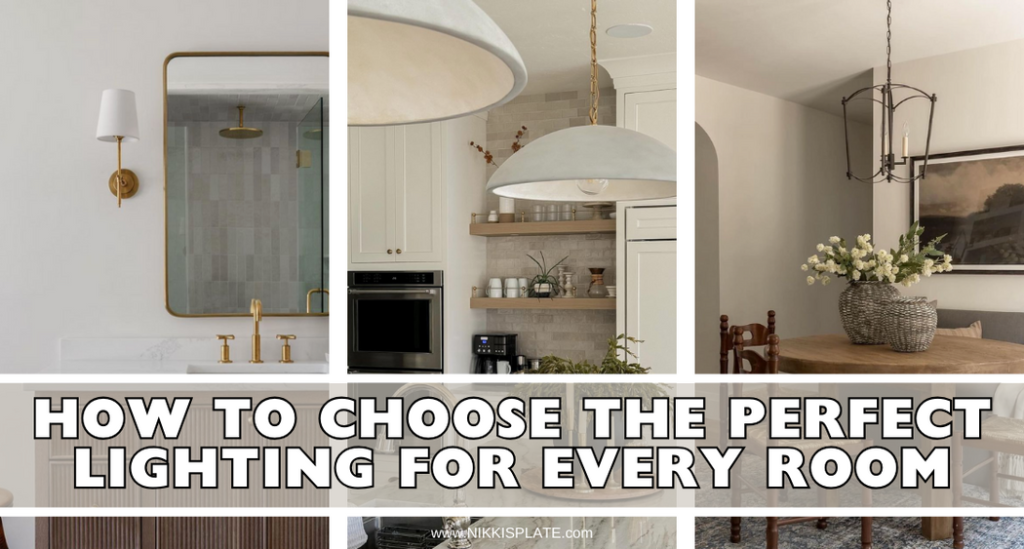Lighting is more than just a functional element in your home — it shapes your mood, enhances your space, and highlights your style. The right lighting can make a small room feel spacious, a dull room feel inviting, and a house feel like home.
But choosing the perfect lighting for every room isn’t a one-size-fits-all process. Each space has different lighting needs based on its function, size, natural light, and design.
In this guide, we’ll walk you through how to choose the ideal lighting for every room in your home — from warm and cozy bedrooms to bright and task-oriented kitchens.
Why Lighting Matters More Than You Think
Before diving into room-by-room tips, it’s worth understanding the three main types of lighting:
- Ambient lighting: General illumination that fills the room (e.g., ceiling lights, chandeliers)
- Task lighting: Focused light for specific activities like reading, cooking, or working (e.g., desk lamps, under-cabinet lights)
- Accent lighting: Decorative or mood-enhancing lighting that draws attention (e.g., wall sconces, LED strips)
The key to perfect lighting is layering all three types thoughtfully — adjusting them for purpose and personality in each space.
Living Room: Balance Warmth and Functionality
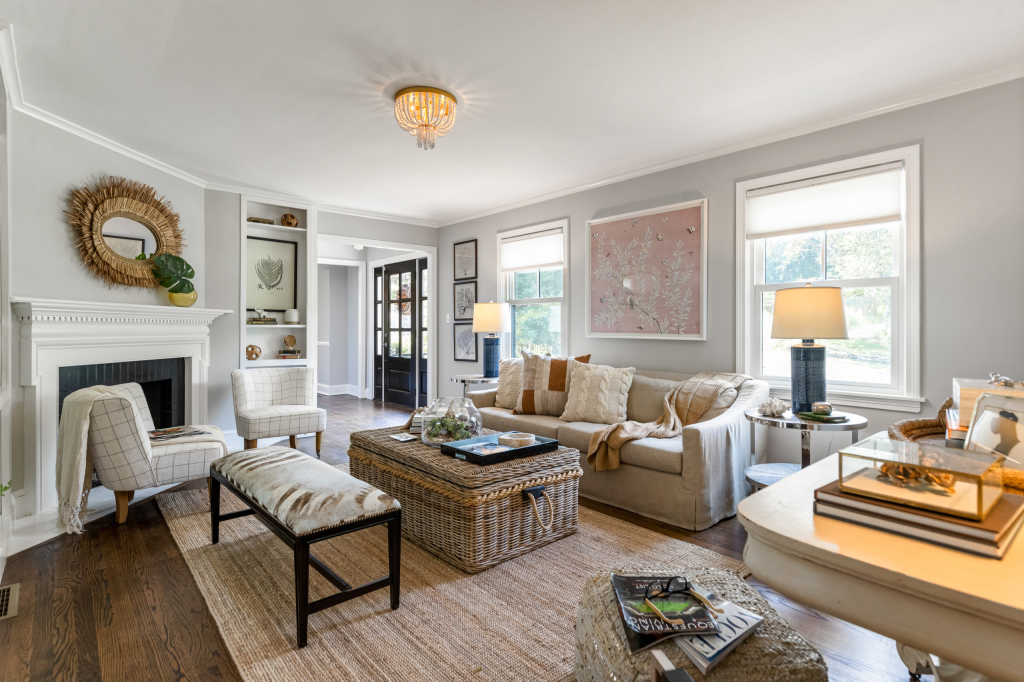
Your living room serves multiple purposes — relaxing, entertaining, watching TV — so you’ll want layered lighting that adapts.
Start with soft ambient light: A central ceiling fixture, such as a semi-flush mount or pendant, provides the base. Complement it with floor or table lamps to create cozy reading corners or conversation zones.
Don’t forget dimmers. They allow you to shift the mood from lively social time to movie-night calm with a twist of a knob.
Pro Tip: Avoid harsh overhead lighting. Instead, bounce light off walls and ceilings to create a soft, inviting glow.
Kitchen: Bright, Functional, and Focused

Kitchens are task-heavy zones, so clarity is key. You’ll need a strong mix of ambient and task lighting.
Use bright ceiling fixtures or recessed downlights for general visibility. Then, add under-cabinet lighting to eliminate shadows on your countertops — perfect for chopping, prepping, and reading recipes.
Pendant lights over islands or breakfast bars not only offer focused light but add visual interest.
Quick Tip: Use cool white bulbs (around 4000K) to enhance alertness and cleanliness in the kitchen.
Bedroom: Soft and Restful

Your bedroom should be a calming sanctuary, so warm, diffused lighting is best here.
Opt for a soft overhead fixture, ideally with a dimmer, to set a relaxing tone. Bedside lamps or sconces are essential for reading — choose bulbs with warm color temperatures (2700K–3000K) for a cozy feel.
Avoid overly bright ceiling lights right before bedtime, as blue-toned light can disrupt your sleep cycle.
Design Idea: Consider adding LED strip lighting under the bed or behind the headboard for a subtle ambient glow.
Bathroom: Bright But Flattering
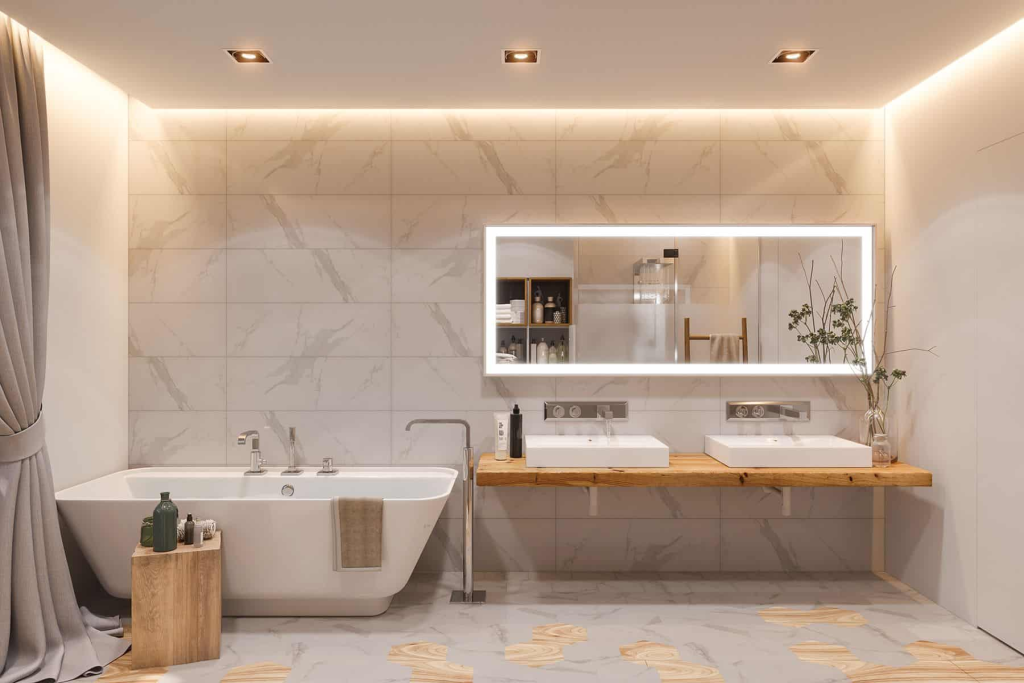
Bathrooms demand a blend of clarity and comfort — especially around mirrors.
Install bright, shadow-free vanity lighting using wall-mounted fixtures or mirror lights at eye level. Overhead lights like flush mounts or recessed fixtures fill out the rest of the space.
Use bulbs with a high CRI (Color Rendering Index) to make sure your makeup and grooming routines aren’t affected by distorted colors.
Tip: Avoid lights directly above the mirror — they create unflattering shadows.
Home Office: Productivity and Comfort
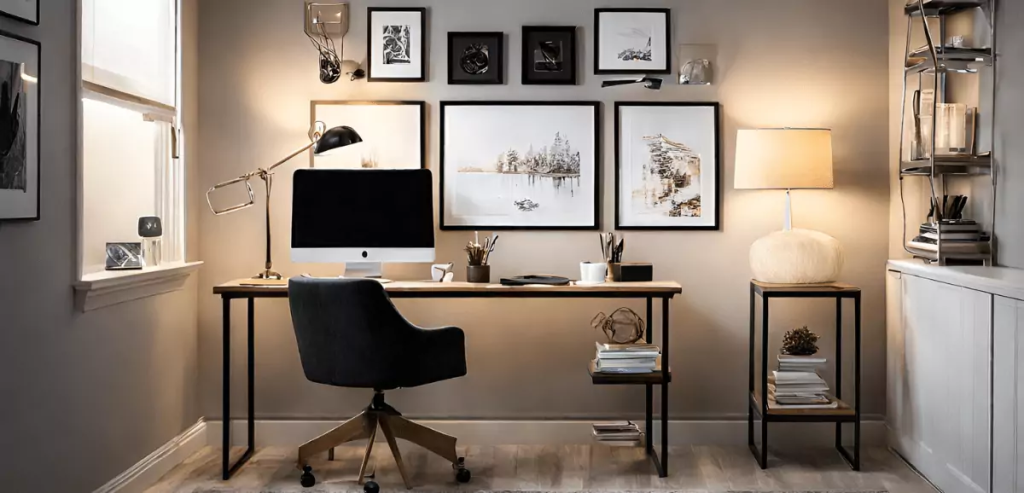
In your workspace, your lighting should keep you alert but not strained.
Start with even ambient light from a ceiling fixture or wall sconces. Add a dedicated desk lamp with adjustable brightness and angle — crucial for reading, writing, or working on screens.
Natural light is a huge bonus, but if you rely on screens all day, choose LED lighting with a color temperature around 4000K–5000K (neutral to cool white) to reduce eye strain.
Ergonomic Tip: Position your desk lamp to the opposite side of your dominant hand to avoid casting shadows on your work.
Dining Room: Drama and Ambiance
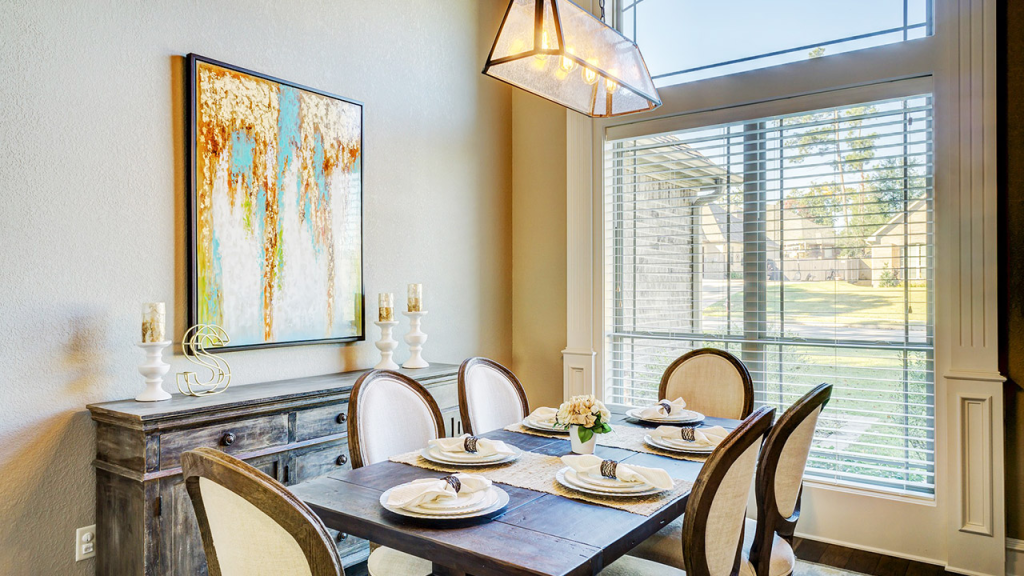
Dining rooms are perfect places to play with mood and style. A statement chandelier or pendant light above the table serves as a focal point.
Make sure the fixture is hung at the right height: about 30–36 inches above the table surface.
Use dimmable bulbs to adjust the intensity based on occasion — brighter for family dinners, softer for romantic meals.
Decor Tip: Layer in accent lighting like wall sconces or a nearby buffet lamp to add warmth and dimension.
Entryway & Hallways: Welcoming and Safe

First impressions start at the front door. Your entryway lighting should feel warm and inviting while offering enough brightness for safety.
Choose a statement pendant or chandelier for taller foyers, or a flush mount for lower ceilings. Wall sconces work beautifully in long hallways, especially when spaced evenly.
For narrow corridors, consider recessed lighting or motion-sensor lights for convenience.
Bonus: Outdoor and Balcony Lighting

Outdoor lighting should offer both function and flair. Use motion-sensor floodlights near entryways for security, and warm LED string lights or lanterns for ambiance on balconies or patios.
Tip: Choose weather-resistant, energy-efficient fixtures rated for outdoor use.
Final Tips for Choosing Lighting
- Match bulb temperatures to room function: warm for relaxing, cool for task areas
- Use dimmers wherever possible for flexibility
- Choose LEDs for energy efficiency and long lifespan
- Consider smart bulbs for app-controlled ambiance and automation
- Don’t forget aesthetics — lighting should complement your home’s design
Final Thoughts
The perfect lighting for every room isn’t just about brightness — it’s about emotion, functionality, and flow. When done right, lighting enhances your daily routines, improves your mood, and makes every space more enjoyable.
By understanding the purpose of each room and layering ambient, task, and accent lighting with intention, you’ll turn your home into a place that looks good, feels right, and works beautifully.
Let your lighting do more than illuminate — let it inspire.

